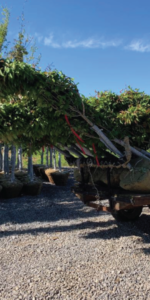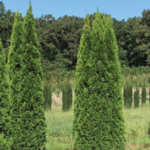Japanese beetles are a major pest of flowers, trees, shrubs, fruits, and vegetables. An adult beetle will feed on over 300 plant species, and grubs feed mainly on the roots of grasses. Why are these beetles such a big problem? While Japanese beetles themselves aren’t a major threat, these insects normally hatch in very large numbers, and when they all land on a shrub, tree, or other plants, they can quickly destroy it. They tend to land and gather in cycles. Some summers are almost empty of beetles, while in other years they are overtaking everywhere. When there is an infestation of them, it is often a very large one that can cause serious damage and ruin tons of plants. How exactly can you control and prevent these pests? The proper timing to control Japanese beetles depends on what stage they are in their life cycle, and which phase you are trying to attack. Hand-picking or spraying with chemicals or natural pesticides should be done while the beetles are currently feeding on plants. This is typically in the period that lasts for around a month in late May, June, or July months. If you are attacking the larva stage it is normally done in late summer through fall when they are maturing and moving to feed on roots. It is impossible to completely get rid of Japanese beetles entirely. More will fly in as the crops are killed. And there aren’t many natural fixes when they are adult Japanese beetles. Wherever you are having the most problem with Japanese beetles, you may want to think about planting your landscape with plants that are less attractive to them.
Some plants you could consider are:
- Arborvitae
- Boxwood
- Dogwood
- Firs
- Hemlock
- Oaks
- Magnolia trees
Grab a bucket and fill it with soapy water, handpick or shake the bugs into the bucket to drown and kill them. You can leave the dead beetles by your plant to scare off any more that fly in. Japanese beetles are slow and sleepy in the early hours and their tight grips are normally more relaxed which makes them easy to get off.





Recent Comments